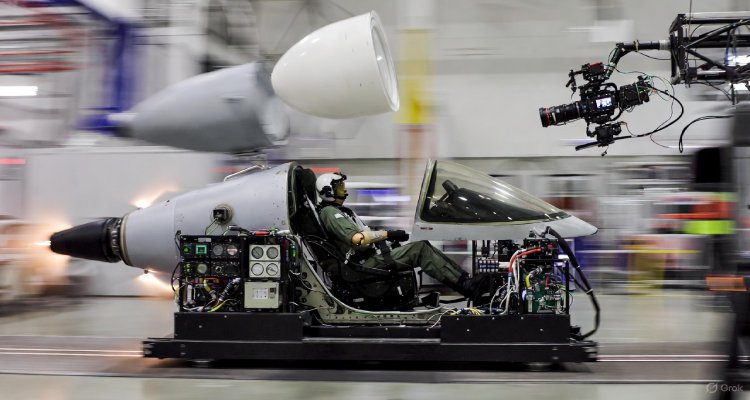Star Wars Tech Gets Real: Laser Defense Systems Now Operational
Once the stuff of science fiction, laser defense systems are now real and deployed. Here’s how militaries are using directed energy weapons to counter modern threats.
Star Wars Becomes Reality: Lasers Are No Longer Just Fiction
In a world where military innovation often echoes science fiction, a once-unthinkable vision is now blazing into reality. Laser defense systems—long confined to the galaxy of Star Wars—are not only real, but officially operational across multiple defense forces. From countering drones to intercepting missiles at the speed of light, laser weapons are rapidly reshaping the future of warfare.
From Sci-Fi Dreams to Battlefield Reality
For decades, directed energy weapons (DEWs) were dismissed as futuristic fantasy. Yet behind closed doors, defense agencies in the U.S., Israel, China, and others quietly advanced laser technology—once limited by power constraints and atmospheric interference.
Today, those constraints have been largely overcome. Thanks to compact power sources, advanced optics, and AI-guided targeting, high-energy laser systems (HELs) are now a field-tested, combat-ready solution. In early 2025, the U.S. Navy officially deployed its Layered Laser Defense (LLD) aboard active vessels, while Israel’s Iron Beam—a laser complement to the Iron Dome—achieved successful live-fire trials and is set for border deployment.
What’s Operational Now—and Why It Matters
Laser weapons offer distinct advantages over traditional projectile or missile-based systems:
- Speed-of-light interception: Lasers hit targets in nanoseconds—ideal for neutralizing high-speed drones and incoming rockets.
- Cost efficiency: While a single interceptor missile costs tens of thousands of dollars, a laser “shot” costs just a few dollars in electricity.
- Silent, invisible precision: Lasers emit no explosive trail and are undetectable to the naked eye—ideal for stealth operations.
United States: The U.S. Army’s DE M-SHORAD (Directed Energy Maneuver-Short Range Air Defense) has completed successful field trials, defending forward bases from drone swarms and short-range missile threats.
Israel: The Iron Beam, developed by Rafael Advanced Defense Systems, uses 100kW-class lasers to intercept mortars and rockets. It’s expected to significantly reduce costs and response times in defending Israeli cities.
China and Russia: Both nations have unveiled laser systems for drone defense and anti-satellite applications, signaling a new arms race in directed energy capabilities.
Expert Insight: “This Is a Paradigm Shift”
Military analysts are calling the operationalization of laser systems a turning point in modern warfare.
“We’ve crossed a historic threshold. Directed energy isn’t coming—it’s here,” says Dr. Elena Morales, a defense technologist at RAND Corporation. “Lasers are already redefining how we approach air defense, especially against low-cost, high-volume threats like drones.”
The public sentiment is equally mixed—ranging from awe to concern.
On X (formerly Twitter), one user wrote: “The future is now. Lasers taking down drones feels like we’re living in a movie.” Another countered, “What’s next? Space battles? We need diplomacy, not death rays.”
Implications: Game-Changer or Pandora’s Box?
Laser weaponry is expected to disrupt global military strategy on several fronts:
- Drone warfare neutralized: Low-cost drone swarms—once a nightmare for conventional militaries—can now be countered affordably and quickly.
- Missile defense reimagined: Lasers could eventually replace missile interceptors in many scenarios, especially for short-range threats.
- Arms race acceleration: Nations without laser capabilities may feel pressured to catch up, sparking new investments and geopolitical tensions.
Meanwhile, concerns about ethics and regulation are growing. What happens when lasers are miniaturized? Could they be misused by rogue states or terrorist groups?
“We need global norms for directed energy,” warns Professor Ajay Shenoy of the Geneva Disarmament Forum. “Without oversight, we risk entering a dangerous new phase of weapon proliferation.”
What Comes Next?
While current laser systems are primarily defensive, future iterations could evolve into offensive weapons with higher wattage and wider applications. Experts predict advancements in beam power, adaptive optics, and mobile deployment within five years.
The U.S. Defense Advanced Research Projects Agency (DARPA) is already experimenting with airborne lasers mounted on fighter jets, while private firms like Lockheed Martin and Raytheon are developing transportable systems for urban defense and mobile warfare.
At the same time, international agencies are calling for laser weapons to be added to the frameworks of the Geneva Convention and other arms-control treaties.
Conclusion: Welcome to the Laser Age
What was once cinematic spectacle has become a core pillar of 21st-century defense strategy. Laser systems—silent, swift, and surgically precise—are no longer the future of warfare. They are the present.
As the world’s militaries aim their beams skyward, one thing is clear: the laser age has officially begun, and it will reshape the battlefield for decades to come.
Disclaimer:This article is based on publicly available information and expert insights as of August 2025. Any future technological developments or operational deployments may alter the status or capabilities described herein.










